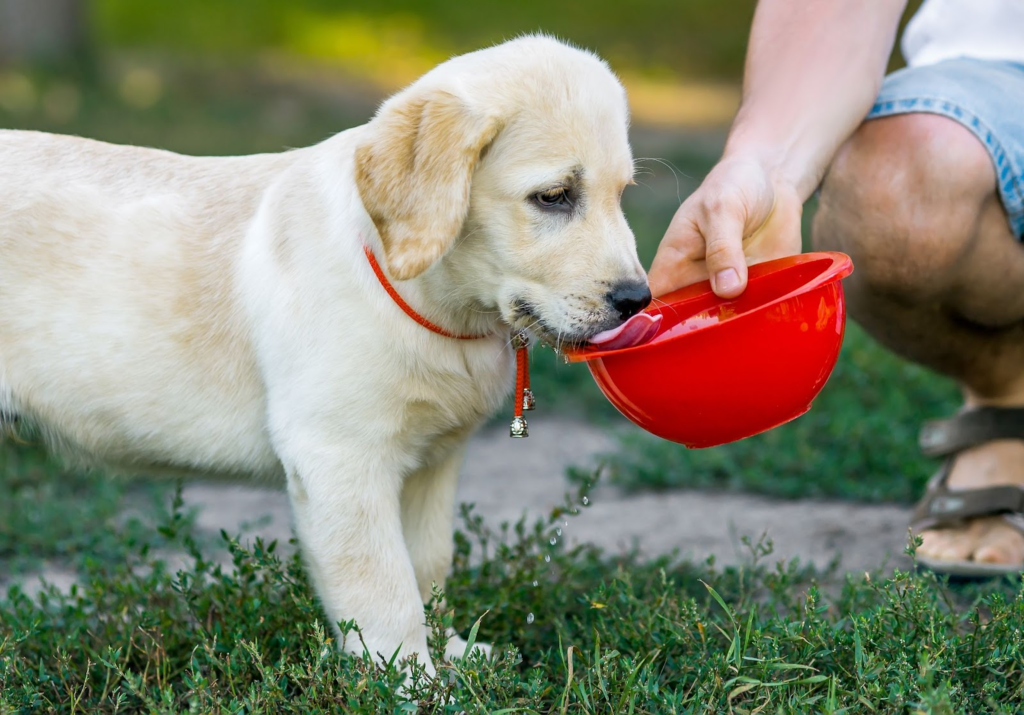
Water is essential for the overall health and well-being of dogs. Just like humans, dogs rely on adequate hydration to support vital bodily functions. As responsible pet owners, it’s important to understand the importance of water for our furry companions and know how long they can go without it. In this article, we will explore the significance of water for dogs, factors that influence their hydration needs, and how long a dog can typically go without water.
The Importance of Water for Dogs: Water plays a crucial role in maintaining a dog’s health and functioning. It is involved in various bodily processes, including digestion, nutrient absorption, temperature regulation, waste elimination, and overall cellular function. Without proper hydration, dogs can experience dehydration, which can lead to serious health complications.
Factors Influencing Hydration Needs: The amount of water a dog requires depends on several factors, including:
a. Size and Weight: Larger dogs generally require more water than smaller breeds due to their higher metabolic rate and body mass.
b. Activity Level: Active dogs or those engaged in intense physical activities such as exercise or playtime will require more water to replenish fluid loss through panting and sweating.
c. Environmental Conditions: Dogs exposed to hot and humid weather conditions or spending time in direct sunlight will need more water to stay hydrated and regulate body temperature.
d. Health and Medical Conditions: Certain health conditions, such as kidney disease or diabetes, can increase a dog’s water intake requirements. Consult with a veterinarian for specific guidelines if your dog has any underlying medical conditions.
Typical Duration Without Water: While the exact duration a dog can go without water varies depending on the aforementioned factors, as well as individual health and circumstances, it is generally recommended that dogs have access to fresh water at all times. However, in cases where water is temporarily unavailable or restricted, such as during travel or medical procedures, most healthy adult dogs can typically go without water for approximately 24 to 48 hours.
Signs of Dehydration: It’s essential to be vigilant and recognize the signs of dehydration in dogs, as prolonged lack of water can be harmful. Common signs of dehydration include:
a. Excessive Panting: Dogs may pant excessively, especially when they are unable to regulate their body temperature.
b. Dry Mouth and Gums: Dehydrated dogs may have sticky or dry gums and a lack of saliva.
c. Sunken Eyes: The eyes may appear sunken or have a dull appearance.
d. Lethargy and Weakness: Dehydration can cause a decrease in energy levels and overall weakness.
e. Loss of Appetite and Weight Loss: Dogs may lose interest in food and experience weight loss.If you notice any signs of dehydration, it is crucial to provide your dog with water and seek veterinary attention if necessary.
Preventing Dehydration: To ensure your dog remains properly hydrated:
a. Provide Access to Fresh Water: Keep a clean bowl of fresh water available at all times, and consider multiple water sources if you have multiple dogs or a larger living space.
b. Monitor Water Intake: Observe your dog’s water consumption patterns, especially during hot weather or increased physical activity, and adjust accordingly.
c. Travel Prepared: When traveling, carry an adequate supply of water and a portable bowl for your dog to drink from.
d. Seek Veterinary Advice: If you have concerns about your dog’s hydration needs or notice any unusual signs, consult with a veterinarian for personalized guidance.
Water is an essential component of a dog’s well-being and supports vital bodily functions. While the duration a dog can go without water varies depending on factors such as size, activity level, and environmental conditions, it is essential to provide fresh water for your furry friend at all times. Monitor your dog’s hydration needs, recognize signs of dehydration, and take proactive steps to ensure they remain properly hydrated. By prioritizing their hydration, you can contribute to their overall health and help them lead a happy and active life.